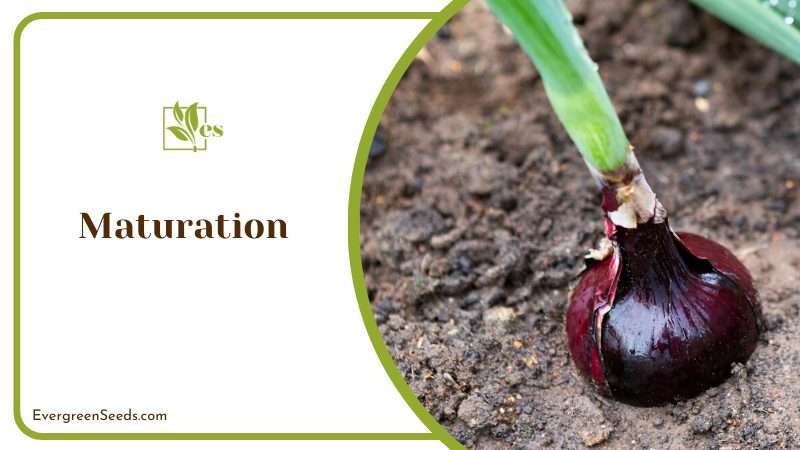- When to Plant Eggplant in NC: Essential Timing Tips for Gardeners - October 2, 2024
- When to Plant Pumpkins in Eastern NC: Optimal Timing for a Bountiful Harvest - October 2, 2024
- When to Plant in South Carolina: Essential Timing for Garden Success - October 2, 2024

Understanding the onion growing stages can seem intimidating since onions are bulbs, unlike many other vegetables. However, the onion life cycle is easy to understand after just a little examination.
Read on as our plant experts give you all the details necessary to figure out all stages of an onion’s growth.
JUMP TO TOPIC
What Are the Stages of Onion Growth?
💥 The stages of onion growth are germination, seedling, bulb development and maturation. Each stage is detailed below for the gardener who plans to harvest their onion before they have the opportunity to bolt and create a flower and seeds.
– Germination
Like all other seeds, the onion seed first germinates before it can grow. During germination, the moisture and heat make the outer layer of the seed peel away so that the embryo develops. Depending on soil type, moisture, and seed variety, germination takes anywhere from a week to over two weeks.
– Seedling
Once the baby onion has a few adult leaves, it is called a seedling. At this point, the baby onion is beginning to develop a root system too. Onions require soil with good drainage since their root systems are shallow. If you have clay soil, it is recommended to supplement with sand to stop clumping.
You should also know that the seedling grows more roots and a few more adult leaves until it is ready to start intense vegetative growth.
– Vegetative Growth
In the vegetative growth phase, the onion grows leaves rapidly. Your onion will go from a few small leaves to eight to ten flourishing ones. The onion stops growing leaves when it is ready to grow the bulb.
– Maturation
Maturation is also called ‘bulb initiation.’ That’s when the onion uses its well-developed leaves to put all its energy into growing the bulb.

After a few weeks, you can actually see the top of the onion because the bulb pops out of the ground! The leaves will also fall over and lay on the ground.
– Harvest
At this point, the onion will not grow any further and it is wise to harvest it. Once you harvest all of your onions, you can dry them and store them for use or sale.
And with that, these are the four major onion stages of growth!
What Is The Onion Life Cycle Like and When Should You Harvest?
The onion life cycle occurs over two years like many other root vegetables. Having a two year life cycle allows the plant to put all of its energy into growing green leaves and creating a reserve of energy stores for the following year. This ‘reserve’ is known as the bulb. It’s also one part of the onion that we eat.
Normally, farmers harvest onion bulbs at the end of the first year. They do this because the bulb is at its biggest point. If the onion was allowed to grow naturally, it would resprout in the spring and grow a flower. All of its stored energy would go into growing the flower, reducing the size of, and shriveling up, the bulb.
When a plant on a two-year cycle develops a flower and uses up the energy stored in its root, it is called ‘bolting’ or ‘going to seed.’ Unless your goal is to farm the plant specifically for seeds, this renders the onion useless and is the opposite of the goal. So, make sure to harvest your onions before they go to seed!
What Are The Planting, Harvesting and Growing Specifics of Different Onion Types?
Here is a table with all the planting, harvesting and growing specifics of each onion type to help you out:
| Onion | Also Known As | Plant in | Harvest | Grown |
| Green | Scallions | Early spring | Early, while immature | In bunches |
| White | Common | Early spring | Fall | Alone |
| Yellow | Common | Early spring | Fall | Alone |
| Purple | Common | Early spring | Fall | Alone |
| Spring
Onion |
Just a baby common onion | Early spring | End of spring or early summer | Alone or in bunches |
Final note:
The difference between them is that spring onions and green onions are two different kinds of bulb vegetables. Green onions are also known as scallions, while spring onions are just common onions harvested early in the season. What makes these two onion varieties different, and how can you accommodate that in your garden? Read on to find out.










